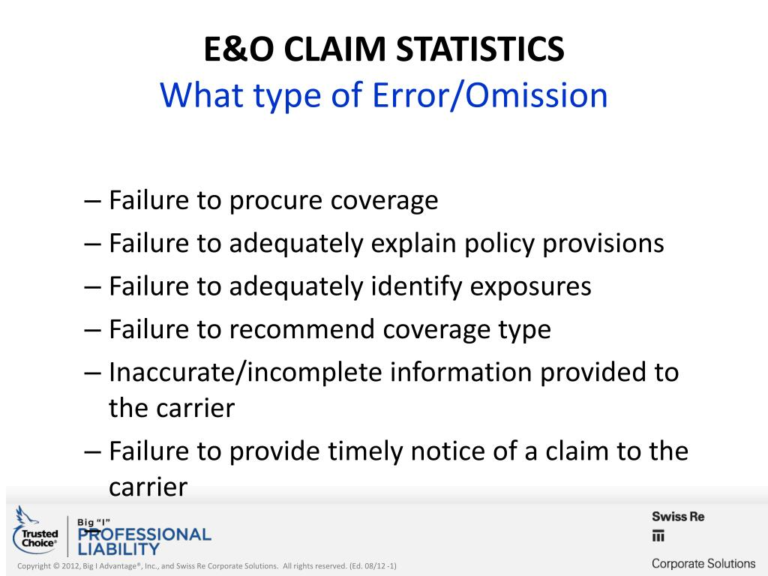Business Continuity: Essential Strategies for Small Businesses
Business continuity is an essential strategy for any organization, especially in today’s unpredictable environment. It encompasses a comprehensive approach to ensuring that businesses can continue operations during and after disruptive events, such as natural disasters or cyber threats. By investing in business continuity planning, companies can effectively prepare for unforeseen challenges, helping them to minimize downtime and maintain service delivery. This proactive approach not only safeguards assets but also reinforces customer trust by demonstrating resilience in the face of adversity. Implementing a robust incident response plan and disaster recovery strategy are crucial components of a successful business continuity framework.
When discussing the importance of maintaining operational stability, terms like operational resilience and crisis management come to mind. These concepts highlight the necessity for organizations to prepare for significant disruptions that could impede their daily functions. Whether through strategic risk management or creating a comprehensive recovery plan, businesses must prioritize their ability to adapt and respond effectively to emergencies. This is especially relevant for small businesses that may lack the resources to absorb prolonged interruptions. By developing a solid continuity strategy, organizations can ensure they remain robust and competitive, even when faced with unexpected challenges.
Understanding Business Continuity Planning
Business continuity planning (BCP) is a proactive approach that small business owners must adopt to ensure that their operations can withstand unexpected disruptions. By anticipating potential risks such as natural disasters, cyber threats, or health crises, businesses can create a framework that outlines procedures and resources necessary for recovery. This not only helps in minimizing downtime but also ensures that essential functions continue to operate even in the face of adversity. With a well-structured BCP, businesses can maintain their competitive edge and safeguard their reputation during challenging times.
The importance of business continuity planning cannot be overstated. It allows small business owners to identify vulnerabilities within their operations and develop comprehensive strategies to mitigate risks. This includes not only the immediate response to a crisis but also long-term recovery efforts. By having a solid plan in place, businesses can reassure stakeholders that they are prepared for any eventuality, thereby fostering trust and confidence among customers, employees, and partners alike.
Key Elements of Business Continuity Strategies
Effective business continuity strategies encompass several key elements that work together to ensure resilience. First and foremost, a thorough risk assessment is crucial. This involves identifying potential threats to the business and evaluating their likelihood and impact. Once risks are identified, businesses can develop specific incident response plans tailored to address each scenario. These plans should outline the roles and responsibilities of team members, ensuring that everyone knows their duties during a crisis.
Another critical component is the establishment of a disaster recovery plan, which focuses on restoring IT systems and data in the aftermath of a disruptive event. This plan should detail the steps necessary to recover and restore operations, including data backups and alternative work locations. Additionally, regular testing of these plans is vital to ensure their effectiveness. By conducting simulations and drills, businesses can identify weaknesses in their strategies and make necessary adjustments to improve their response capabilities.
Creating a Business Impact Analysis
A business impact analysis (BIA) is an essential tool in the development of a robust business continuity plan. It helps businesses identify their critical operations, assess the potential impact of disruptions, and prioritize recovery efforts accordingly. By systematically evaluating which services and functions are most vital to the business’s survival, owners can allocate resources effectively and ensure that the most critical processes are restored first during a crisis.
The BIA process involves gathering input from various stakeholders across the organization, enabling a comprehensive understanding of interdependencies and the potential ripple effects of a disruption. This collaborative approach not only enhances the accuracy of the analysis but also fosters a culture of preparedness throughout the organization. Ultimately, a well-conducted BIA provides the foundation for informed decision-making in the face of unexpected challenges.
Developing an Incident Response Plan
An incident response plan (IRP) is a crucial element of any business continuity strategy, designed to provide immediate, actionable steps when a crisis occurs. This plan outlines the procedures for identifying, containing, and mitigating the impact of incidents, such as cyberattacks, natural disasters, or equipment failures. By having a detailed IRP in place, businesses can respond swiftly to minimize damage and ensure the safety of employees and assets.
When developing an IRP, it is essential to clearly define roles and responsibilities for team members involved in the response effort. This includes designating a response team, establishing communication protocols, and providing training on executing the plan effectively. Regular reviews and updates to the IRP are necessary to accommodate changes in the business environment and address new risks. A well-prepared incident response plan can significantly reduce the chaos that often accompanies emergencies and help businesses recover more efficiently.
The Role of Disaster Recovery Planning
Disaster recovery planning (DRP) is a crucial subset of business continuity planning, focusing specifically on restoring IT systems and data following a disruption. As technology becomes increasingly integral to business operations, having a robust DRP is essential for minimizing downtime and ensuring that critical digital assets are protected. This involves establishing backup protocols, identifying recovery time objectives, and determining the resources needed for a swift recovery.
A well-crafted disaster recovery plan not only addresses data restoration but also considers the infrastructure required to support ongoing operations. This includes defining roles for IT staff and ensuring that necessary technologies are in place to facilitate recovery efforts. By investing in a comprehensive DRP, businesses can significantly enhance their resilience against cyber threats, natural disasters, and other potential disruptions, ensuring a smoother transition back to normalcy.
Best Practices for Small Business Continuity
Creating an effective small business continuity plan requires thoughtful consideration of various best practices. One of the most important steps is to identify and analyze potential risks that could impact operations. Small business owners should gather their teams to brainstorm potential challenges, ranging from natural disasters to supply chain disruptions. By recognizing these threats early, businesses can develop tailored strategies that mitigate risks and enhance overall resilience.
Additionally, clear communication and role definition are critical during a crisis. Each employee should understand their responsibilities and how they contribute to the recovery process. Regular training sessions and drills can help reinforce these roles, ensuring that everyone is prepared to act decisively when an incident occurs. This proactive approach not only enhances business continuity but also fosters a culture of preparedness that benefits the entire organization.
Importance of Regular Testing and Updates
Regular testing and updates of business continuity plans are vital to ensuring their effectiveness. As businesses evolve, so do the risks they face and the operational processes they employ. Conducting mock drills and simulations helps identify gaps in the plan and provides opportunities for improvement. This practice not only boosts the confidence of employees in their ability to respond but also reinforces the importance of being prepared for emergencies.
Moreover, it is essential to keep the business continuity plan up-to-date with the latest industry standards and technological advancements. As new threats emerge, such as sophisticated cyberattacks, businesses must adapt their strategies accordingly. Regular reviews of the plan, along with feedback from employees involved in testing, will help ensure that the plan remains relevant and effective in safeguarding the business’s future.
Consulting Experts for Enhanced Preparedness
Involving experts in the development of business continuity strategies can significantly enhance a small business’s preparedness for emergencies. Risk management specialists can provide valuable insights into potential vulnerabilities and help craft tailored response and recovery plans. Their expertise can guide businesses in identifying critical assets, developing effective incident response protocols, and ensuring that disaster recovery measures are robust and comprehensive.
Additionally, consulting with professionals can aid in the training of employees on best practices for crisis management. By leveraging expert knowledge, businesses can create a culture of resilience, ensuring that employees are equipped to handle emergencies effectively. This collaborative approach not only strengthens the continuity plan but also builds a stronger, more informed workforce, ready to tackle any challenges that may arise.
Maintaining Business Reputation Through Continuity Planning
In today’s fast-paced digital world, maintaining a business’s reputation is paramount, especially in the wake of a crisis. A well-structured business continuity plan not only ensures operational resilience but also reassures customers and stakeholders that the organization is prepared to handle disruptions. Effective communication during incidents, coupled with swift recovery efforts, can help preserve trust and loyalty, which are critical for long-term success.
By prioritizing business continuity planning, small businesses can safeguard their reputation and minimize the potential fallout from emergencies. Transparent and timely communication about the steps being taken to address a crisis can foster goodwill among customers and partners. In essence, investing in business continuity is not just about operational survival; it’s also about reinforcing a brand’s commitment to reliability and excellence, even in challenging circumstances.
Frequently Asked Questions
What is business continuity planning, and why is it important for small businesses?
Business continuity planning refers to the processes and procedures that a business puts in place to ensure that essential functions can continue during and after a disaster. For small businesses, it is vital as it helps minimize downtime, protect assets, and maintain customer trust during unforeseen events like natural disasters or cyber threats.
How can a small business create an effective business continuity plan?
To create an effective business continuity plan, small business owners should first conduct a business impact analysis to identify critical operations, assess risks, and prioritize recovery strategies. Then, develop incident response and disaster recovery plans, assign roles to employees, and regularly test the plan to ensure its effectiveness.
What is the difference between an incident response plan and a disaster recovery plan?
An incident response plan is implemented during a crisis to manage the immediate response and limit damage, while a disaster recovery plan is focused on restoring operations and recovering data after the incident has occurred. Both are essential components of a comprehensive business continuity strategy.
What key elements should be included in a business continuity plan?
A comprehensive business continuity plan should include a risk assessment, business impact analysis, incident response plan, disaster recovery strategy, communication plan, and clearly defined roles and responsibilities for staff during an emergency.
How often should a small business review and update its business continuity plan?
A small business should review and update its business continuity plan at least annually or whenever there are significant changes to the business operations, personnel, or after an incident occurs. Regular testing and training should also be part of the review process to ensure preparedness.
What role does risk management play in business continuity planning?
Risk management is crucial in business continuity planning as it involves identifying, assessing, and prioritizing risks that could disrupt operations. By understanding these risks, businesses can develop strategies to mitigate them, ensuring a smoother recovery during emergencies.
How can small businesses practice their business continuity plans effectively?
Small businesses can practice their business continuity plans by conducting mock drills and simulations to test their response to various scenarios. Regular training sessions and updates based on drill outcomes can help refine the plans and ensure all employees understand their roles.
What common threats should small businesses prepare for in their business continuity plans?
Common threats small businesses should prepare for include natural disasters (like floods and hurricanes), cyberattacks (such as data breaches), pandemics, fires, and theft. Each business should tailor their plans based on their unique risks and operational needs.
How can consulting a risk management expert benefit my business continuity plan?
Consulting a risk management expert can provide valuable insights into identifying vulnerabilities and refining your business continuity plan. They can help develop tailored strategies and training solutions to enhance your preparedness and resilience against potential risks.
What are some tips for improving small business continuity plans?
Tips for improving small business continuity plans include brainstorming potential risks with your team, clearly defining roles and responsibilities during emergencies, regularly testing the plan, and consulting experts for guidance on best practices.
| Key Element | Description |
|---|---|
| Business Continuity | A strategy that helps businesses prepare for and recover from unexpected disruptions. |
| Importance | Essential for maintaining operations and minimizing financial losses during emergencies. |
| Business Impact Analysis | Identifies critical services and ranks them by priority to manage risks effectively. |
| Types of Plans | Includes incident response, disaster recovery, and comprehensive business continuity plans. |
| Tips for Planning | 1. Brainstorm potential issues. 2. Clearly define roles. 3. Regularly practice and test the plan. |
Summary
Business continuity is a crucial aspect of modern enterprise management that ensures organizations can effectively respond to unexpected disruptions. By preparing for emergencies through strategic planning, businesses can minimize downtime and maintain operational integrity. This not only safeguards their reputation but also builds resilience against potential threats, enabling seamless recovery and sustained service delivery. Investing in a robust business continuity plan is essential for every small business aiming to navigate uncertainties and thrive in a competitive marketplace.






